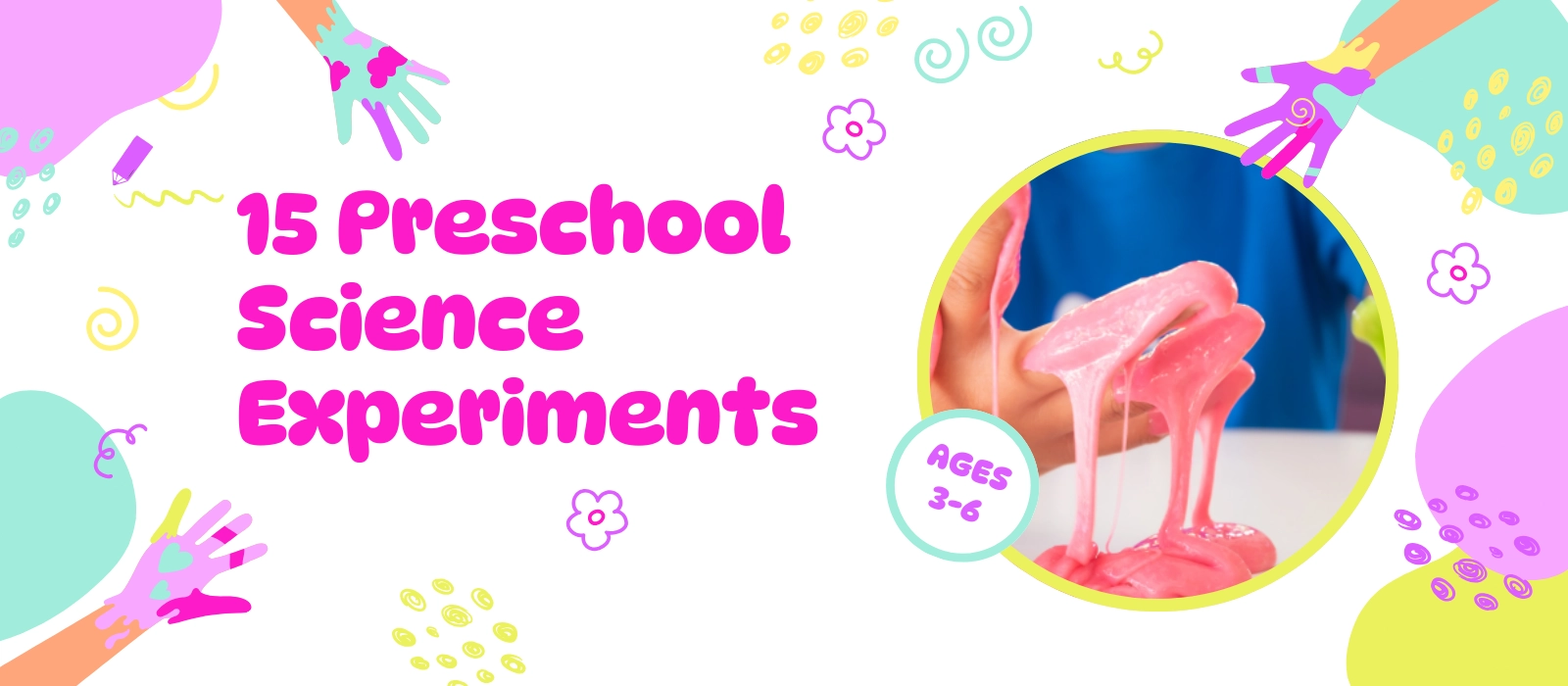Have you ever wondered how to make science fun and engaging for preschoolers? Are you struggling to find simple, safe, and exciting experiments that can capture their attention? How do you ensure that these activities not only entertain but also promote learning? Preschool Science Experiments offer the perfect solution. They are designed to stimulate curiosity, build essential skills, and introduce young children to the wonders of science in a way that is both fun and educational.
Preschool Science Experiments are not just simple activities; they are the key to unlocking children’s curiosity about the world! These creative experiments not only spark children’s interest in science but also ignite their curiosity, allowing them to truly understand the phenomena around them. From observing the water cycle to experiencing material reactions, these experiments turn scientific concepts into tangible, hands-on experiences. Through these simple yet fun activities, children not only grasp basic scientific principles but also develop critical thinking, motor skills, and problem-solving abilities.
In this article, I will share 15 fun and easy experiments that will spark your child’s interest in science and help them grow in both knowledge and creativity. Get ready to ignite their curiosity with these engaging preschool science experiments!
15 Easy and Fun Preschool Science Experiments
Preschool science experiments offer an exciting way for young children to explore and discover the world around them. These simple and fun activities not only teach important scientific concepts but also help children develop critical thinking, creativity, and problem-solving skills. Below are 15 easy and fun preschool science experiments that can be done with materials you likely already have at home.

1. Baking Soda and Vinegar Volcano
This classic experiment is a fun way to introduce children to chemical reactions. Simply combine baking soda and vinegar to create a fizzy volcano eruption. This preschool science experiment helps children understand cause and effect in a hands-on way.
2. Color Mixing with Food Coloring
Mixing colors is a great way to introduce preschoolers to basic science concepts. Using primary colors and mixing them together allows children to learn about color theory and experiment with the creation of new colors. This easy science experiment for preschoolers is both fun and educational.


3. Sink or Float Experiment
Using various objects such as toys, rocks, and paper clips, this experiment teaches children about buoyancy and density. It’s a simple but effective science experiment for preschoolers that encourages observation and prediction.
4. Water and Ice
Fill several containers with different liquids, and then add ice cubes to see how the ice melts in each one. This preschool science experiment with water allows children to observe the physical properties of different liquids and learn about temperature changes.


5. Rainbow in a Jar
This colorful experiment is a fun way to demonstrate the concept of density. By layering liquids of different densities, preschoolers can create their own rainbow in a jar. It’s a visual and interactive preschool science experiment that captivates young learners.
6. Plant Growth Observation
Have children plant seeds in soil and observe how they grow over time. This experiment teaches children about biology, plant life cycles, and the environment. It’s a fantastic preschool science experiment that connects them with nature.


7. Making Slime
Slime is always a hit with preschoolers! Making slime with simple ingredients like glue, baking soda, and contact lens solution is a great way to introduce preschoolers to chemistry. This is a fun preschool science experiment that allows children to explore the properties of non-Newtonian fluids.
8. Balloon Inflation with Baking Soda
This experiment uses baking soda and vinegar to inflate a balloon. Children will enjoy watching the chemical reaction in action while learning about gases and reactions. It’s an easy and fun science experiment for preschoolers.


9. Lemon Volcano
Similar to the baking soda and vinegar volcano, the lemon volcano uses citric acid to create an eruption. This preschool science experiment teaches kids about acids and bases while providing an exciting visual display.
10. Magnetic Exploration
Using magnets and various objects, this experiment helps preschoolers learn about magnetism and the properties of magnetic and non-magnetic materials. It’s a simple and engaging preschool science experiment that introduces basic physical science concepts.


11. Bubble Science
Children love bubbles! This experiment allows preschoolers to explore how bubbles form and why they pop. It’s a fun and simple preschool science experiment that sparks curiosity about air and surface tension.
12. Homemade Snow
For a winter-themed preschool science experiment, try making homemade snow with baking soda and shaving cream. It’s a great way to teach children about the properties of snow and the science behind freezing temperatures.


13. Floating Egg Experiment
By dissolving salt in water and placing an egg in the solution, you can demonstrate how density affects buoyancy. This easy science experiment for preschoolers encourages observation and critical thinking as children explore how the egg floats in the saltwater solution.
14. Nature Exploration
Take a walk outside and gather different natural materials like leaves, rocks, and sticks. Back inside, examine them under a magnifying glass. This nature science experiment for preschoolers helps children connect with the environment and develop observational skills.


15. Creating a Tornado in a Bottle
By filling a bottle with water, adding some glitter, and creating a vortex by swirling it, children can make a tornado in a bottle. This is a fun preschool science experiment that teaches them about weather patterns and forces.
These preschool science experiments are simple yet effective ways to engage young children in learning. By experimenting with everyday materials, children not only learn scientific principles but also develop critical thinking, creativity, and problem-solving skills. Whether it’s exploring the properties of water, making slime, or learning about the natural world, these easy science experiments for preschoolers are perfect for introducing young minds to the wonders of science.
Safety Tips for Conducting Preschool Science Experiments
When conducting preschool science experiments, safety is always the top priority. While these experiments are fun and educational, it’s important to ensure that they are carried out in a safe environment, especially since young children are still learning how to handle materials and tools. Here are some essential safety tips for conducting preschool science experiments to keep both children and adults safe.
1. Use Non-Toxic and Safe Materials
One of the most important aspects of preschool science experiments is choosing safe materials. Always make sure that the items you are using are non-toxic and suitable for young children. Avoid using any substances that may be harmful if ingested or inhaled. Many easy science experiments for preschoolers use everyday materials like baking soda, vinegar, and food coloring, which are safe and commonly found in homes.
2. Supervise at All Times
Preschoolers need constant supervision during any science experiments for preschoolers. Even simple activities can involve potential risks, such as spills or accidental contact with certain substances. Make sure you are always present to guide the children, answer questions, and ensure they are following the instructions properly.
3. Teach Children Proper Handling Techniques
Before starting any easy preschool science experiments, teach children how to properly handle materials. Explain how to pour liquids carefully, use measuring cups correctly, and avoid putting hands near potentially messy substances like food coloring or baking soda reactions. This encourages good habits and helps children develop fine motor skills while staying safe.
4. Keep Experiment Areas Clean and Organized
A tidy workspace is essential for safety during preschool science experiments. Ensure that the area is clean and organized before beginning an experiment. Make sure all materials are easy to reach and set up in an orderly fashion. After the experiment, clean up any spills immediately to avoid slipping hazards or contamination.
5. Use Age-Appropriate Tools
When conducting science experiments for preschoolers, use age-appropriate tools and equipment. For example, avoid sharp objects like knives or glass containers, and instead, use plastic or wooden tools that are safer for younger children. Additionally, small measuring spoons, cups, and droppers are great alternatives to ensure children can safely participate in the experiment.
6. Be Mindful of Hot Liquids and Surfaces
While most preschool science experiments involve cold or room-temperature materials, there are some experiments that require heating substances or working with hot objects. Always ensure that any heat source is far out of reach of preschoolers. If using hot water or other heated items, ensure that children are never in direct contact with the substances and that the adults handle the hot items.
7. Use Proper Ventilation
For certain preschool science experiments that may involve strong odors, such as making slime or working with cleaning products, ensure proper ventilation. Open windows or work outside to avoid inhaling any potentially strong fumes. This is particularly important if you are using substances like vinegar, bleach, or other chemicals that may have strong smells.
8. Know When to Avoid Certain Experiments
Some science experiments for preschoolers can be a bit too complex or require chemicals that are not safe for young children. It’s important to know your child’s developmental stage and avoid experiments that may be too difficult or potentially hazardous. Always assess the risk and complexity before introducing a new experiment to ensure it is suitable for preschool-aged children.
9. Encourage Safety Awareness
As part of the experiment, encourage children to practice safety awareness. Teach them the importance of listening to instructions, following rules, and using materials properly. By reinforcing these habits early, children learn to approach science safely and responsibly, both in the classroom and at home.
10. Clean Hands After Experiments
After completing any preschool science experiment, be sure to have children wash their hands thoroughly. Many materials used in science experiments for preschoolers can be sticky or messy, so it’s essential to maintain good hygiene by cleaning up properly after each activity.
By following these safety tips, you can ensure that your preschool science experiments are fun, engaging, and, most importantly, safe for young learners. When children are able to explore science in a safe environment, they can learn and grow without worry, fostering a love for learning and discovery that will stay with them throughout their education.
Conclusion
Preschool science experiments are a fantastic way to ignite curiosity and foster a love for learning in young children. By making these experiments interactive, fun, and safe, you provide preschoolers with the opportunity to explore, experiment, and discover the world around them. Whether through hands-on exploration, creative storytelling, or open-ended questions, these activities promote critical thinking, problem-solving, and creativity—skills that are essential for their overall development. By using simple materials and incorporating seasonal themes, you can ensure that preschool science experiments remain engaging and educational year-round.



